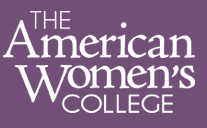You have /5 articles left.
Sign up for a free account or log in.

Bay Path University
Bay Path University is having to adjust downward the number of students it believes will want to study online through its American Women’s College, but university leaders say they see fully online education as one of many endeavors that will help them remain a financially sound women’s college in the future.
Bay Path, a private university in Longmeadow, Mass., had hoped to enroll as many as 5,000 adult women in the first five years of the fully online college, which launched in 2013. With roughly 450 students on track to begin studying this fall and a total online enrollment of about 800, the university is less than one-fifth of the way there.
“We overestimated the enrollment,” said Carol A. Leary, the university’s president. “At the end of our first year, we realized that our marketing dollars were going to be much more significant than we ever anticipated. With each year and with more and more colleges entering the online market -- which we probably underestimated -- we did not put into the amount of money for marketing to get to 4 to 5,000 students.”
Leary said the university is now taking a more “realistic” approach to growing its online enrollment, and that it has scrapped its initial enrollment estimate. “But it will get to 4-5,000,” she added. “I can guarantee it, because you’ll have more and more digital natives wanting this kind of education in the future.”
The university now expects it will break even on its online venture after four years, Leary said.
The ongoing saga of Sweet Briar College’s troubles and the moves by many women's colleges to become fully coeducational, has many small women's colleges wondering how to stay viable. According to an Inside Higher Ed survey, few business officers across all sectors of higher education believe their institutions will shut down in the next five years, but the concern is more palpable at private nonprofit colleges and universities like Bay Path: 27 percent of those respondents fear they may have to close “in the coming decades.”
The slower than anticipated growth of the American Women’s College is by no means a death knell for Bay Path, however. The institution has gone from junior college to college to university in less than 30 years, and has been recognized as one of the fastest-growing small colleges in the region.
“Bay Path over the last 20 years has had to realize … that to remain a vibrant, viable women’s college, we had to diversify,” Leary, who became president in 1994, said. The university didn’t launch online programs “out of need,” she said. “It was out of mission and the decision that this would be a good way for women to get a college education.”
The university has grown its enrollment to more than 2,300 by fragmenting itself into colleges and programs that attract different student populations. It still has a traditional all-women core of about 700 undergraduates, but accepts both men and women into its graduate programs, the first of which launched in 1999. Nontraditional students either enroll in the One Day a Week College or online in the American Women’s College.
Leary said the One Day a Week College has been a “key driver” in financing advanced degrees and the university’s expansion into the online undergraduate market.
In the late ’90s, Leary and other administrators decided to look at how the university was serving adult women, finding that some students spent as much as a decade on a one-class-a-semester grind to a bachelor’s degree. One Day a Week College launched in 1999, offering six accelerated six-week sessions a year with courses crammed into two five-hour Saturday sessions. The reasoning behind the decision, Leary said, was that adult women whose family obligations kept them from pursuing an education would be more likely to be able to set aside time -- finding a caretaker for children, for instance -- on one day a week rather than multiple nights.
More than 2,500 women have graduated from the One Day a Week College since. When Bay Path in 2013 formulated the plan for the American Women’s College, it borrowed from its existing approach to educating adult students.
Students in both colleges pay $400 a unit, each worth three or four credits. That means the total cost of an online degree is $48,000, or about one-third of what residential students pay. Undergraduates studying on campus beginning this fall will pay an estimated $127,140 in tuition over four years, based on this year’s estimated cost of attendance.
The online college also copied the One Day a Week College’s structure of six-week units, which means students can graduate with a bachelor’s degree in three years. Their degree offerings are also similar, with options such as business, criminal justice and other programs that are popular among adult students.
More challenging, however, is the task of translating the characteristics of a women’s college to an online environment. Leary described the university’s goal as promoting a culture of “women supporting women online.”
“You have to get the emotion of what happens on ground in the online environment,” she said.
The university hopes to accomplish that through a combination of courses (all students are required to take courses in the Women as Empowered Learners and Leaders program, or WELL, which introduces them to college-level studies and leadership skills) and data.
Bay Path last October received a $3.5 million First in the World Grant from the U.S. Department of Education, which the university is using to build a data warehouse and tools that collect student data from different platforms. By combining data from its learning management and administrative systems, the university hopes in the future to be able to predict student behavior and immediately alert advisers or instructors when a student shows signs of falling behind, said Amanda J. Gould, chief of operational effectiveness and student success.
That functionality should become available this fall, Gould said. Over time, the goal is for students to have access to their own “dashboard” of data, which she said could empower them to be proactive about furthering their education.
The university is also using the grant to create courses that adapt to students' progress. About 40 such courses will roll out over the next four years, Gould said.
While those initiatives are not yet in place, the American Women's College is reportedly getting high marks. In an internal survey of student satisfaction, students in that college had the highest satisfaction and response rates.
“What we hear from our graduates and students is that they lean on each other and they need encouragement,” Gould said. “That’s what drives the infrastructure that we’re building.”







